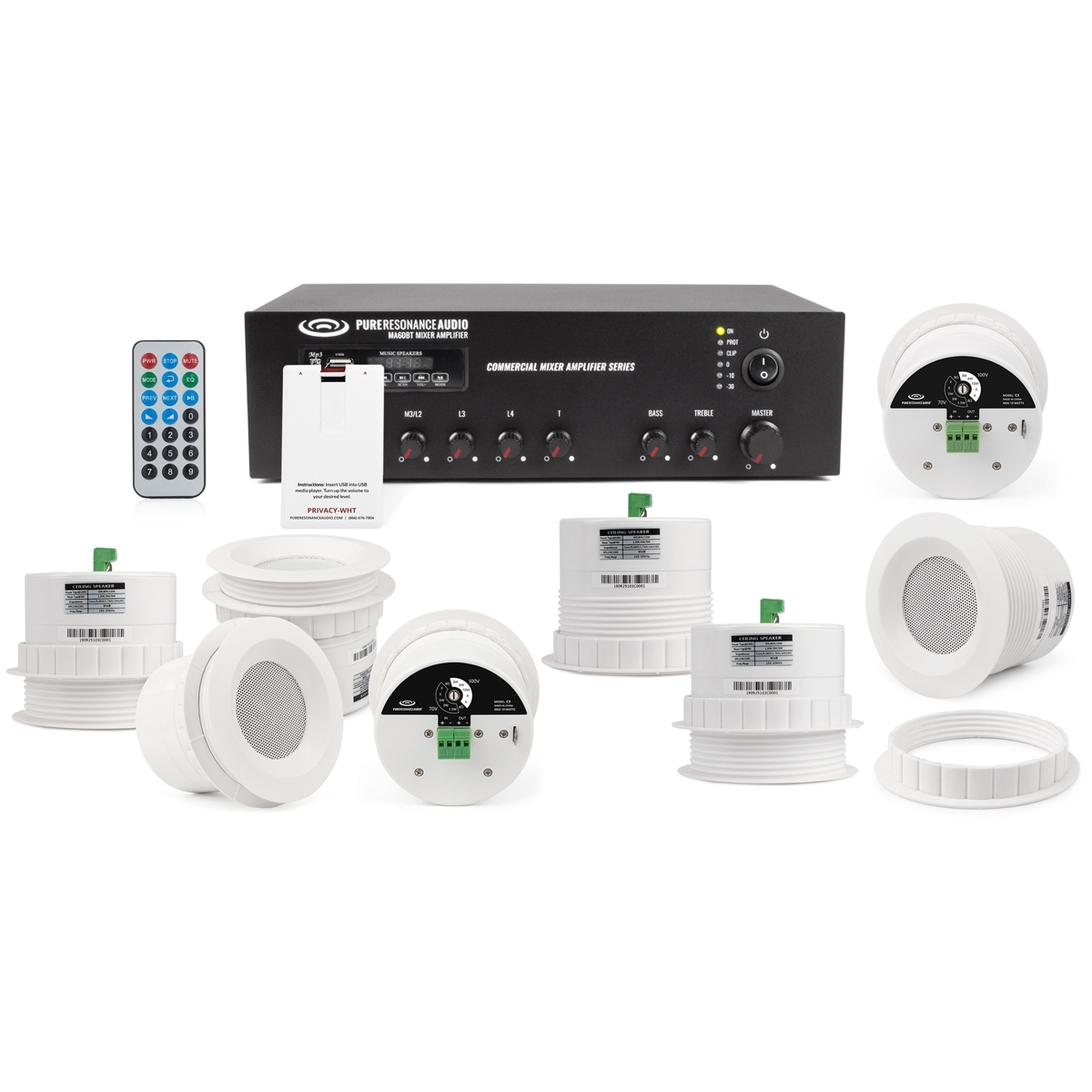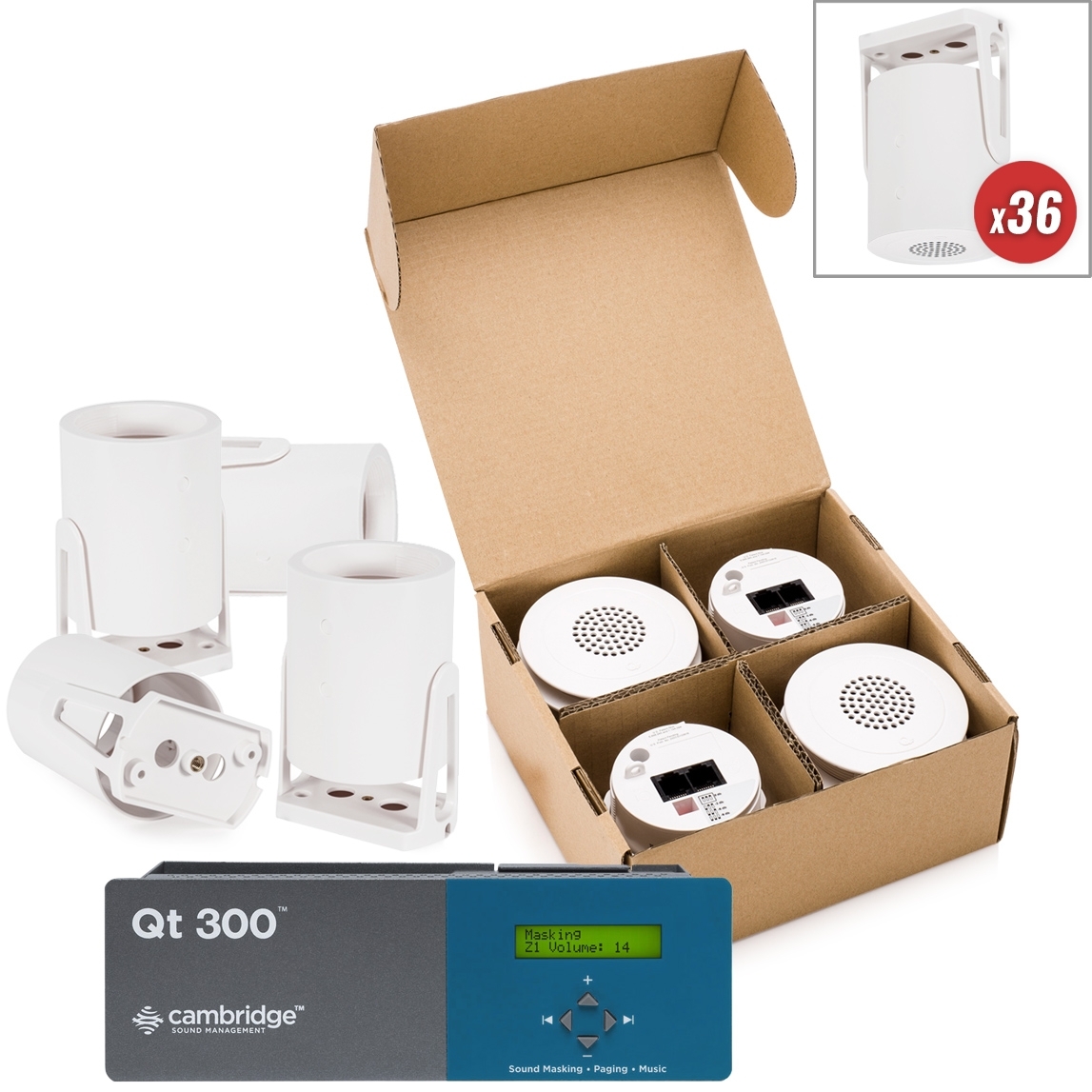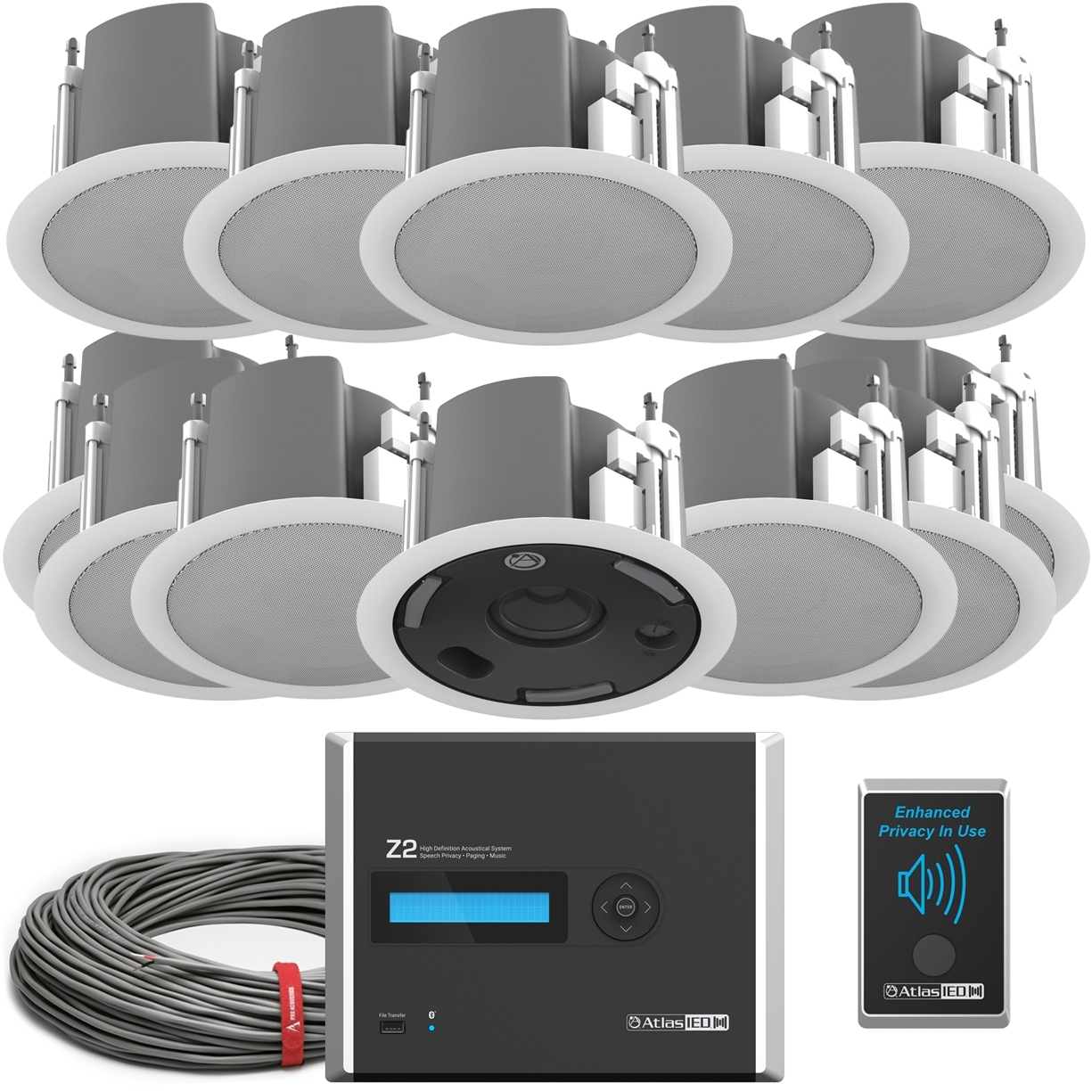Commercial sound masking systems create more productive and comfortable environments by promoting speech privacy, reducing distractions, and protecting sensitive information. This allows the people in the area to focus more on their own work or interactions by making other conversations and noises around them less noticeable. Sound masking can promote speech privacy, cut down on noise distractions, and increase focus and productivity while also protecting private conversations.
It may sound great that sound masking and speech privacy systems can provide so many benefits in open offices, clinics, workplaces, pharmacies, and other business applications but what is sound masking and how does it work to reduce noise? Does sound masking really work?
In this blog, we’ll cover:
1. What is sound masking?
2. How does sound masking work?
3. Why is sound masking used?
4. Where is sound masking being used?
5. How is sound masking different from white noise?
6. Does sound masking really work?
7. Why use sound masking in an office?
8. Can you use music as sound masking?
9. What is a sound masking system?
 What is sound masking?
What is sound masking?
Sound masking is the popular acoustic process of adding a specific soft ambient background sound engineered to match the frequency of human speech to reduce noise distractions, protect speech privacy and increase comfort for your staff, patients, customers, and listeners. It is also sometimes referred to as noise masking or speech privacy.
How does sound masking work?
By being able to put a distributed audio system above or in the ceiling, we can add this acoustically tuned ambient background sound that helps people unconsciously focus more on the masking than everything else going on around them. Because the sound masking targets the same frequency as human speech, it reduces its intelligibility. It also serves to raise the overall volume of the space slightly in a controlled way to eliminate excess stimuli making the area actually seem quieter.
Direct field sound masking vs indirect sound masking
There are a couple of different types of sound masking. Indirect sound masking is when the sound masking speaker is mounted above the ceiling inside the plenum space and points upwards. The sound then reflects back down over the area below.

Then there is direct field sound masking where the speaker is mounted on the ceiling pointed down towards the listener, more like a traditional speaker system.

Both can be effective in various applications.
Why is sound masking used?
Sound masking speakers paired with a sound masking noise generator help protect sensitive content and enhance your overall worker comfort and productivity by eliminating some of the distractions around them. It also helps protect individual privacy while meeting the required HIPAA compliance and legal standards where workers discuss private customer information such as financial or healthcare records.
Sound masking has become more important because of the large transition to more open architecture design plans, open floor layouts, cubicles, and call center-type workspaces with lots of people in a tight space. It is difficult for workers to focus on their jobs when it’s easy to listen to what their neighbor is doing. That’s where sound masking comes in.
Where is sound masking being used?
Privacy sound masking can protect sensitive information and provide a more pleasant atmosphere in buildings such as banks and financial organizations, military and government agencies, hotel lobbies, spas, libraries, educational institutions, hospitals, pharmacies, retail, churches, and offices - anywhere that needs more speech privacy and fewer distractions.
How is sound masking different from white noise?
White noise is a generic term for a random signal having equal intensity at different frequencies. Sound masking is not the same as white noise although sometimes white noise generators are involved in sound masking systems. Sound masking is consciously tuned specifically to make it as pleasant as possible but also to make it focus on the speech frequencies so we are less inclined to listen to what’s going on next to us.
 Does sound masking really work?
Does sound masking really work?
Absolutely. It works first by canceling out some of the speech frequencies, but also by raising the overall noise floor to limit distractions and aid in productivity and overall speech privacy, which can be especially useful for government buildings or high-security facilities.
Why use sound masking in an office?
One reason office sound masking is important is that it allows you to mask sensitive content that you don’t want unintended people overhearing. Sound masking systems for offices protect patient privacy reinforce confidentiality, and increase employee well-being. By eliminating distractions, noise masking systems create a more productive workspace. The strategic masking noise blends into the background of shared workspaces and open floor plan offices which has been proven to boost productivity.
Instead of sound masking, can you use music?
We would say the answer is no. Masking differs from music in that it is constant just like the air conditioning running in the background. It’s always set the same and stays the same volume. With music obviously, you have high notes, low notes, you have fast parts, slow parts, and you have songs stopping and starting, so our minds pay a little more attention to it.
However, to really change the ambiance of your space, you can always put music on top of the masking. But we always want to run that masking noise first.
What is a sound masking system?
The components of commercial sound masking systems typically include direct or indirect field plenum-rated speakers, sound masking generators, wall control panels, and other sound masking accessories.
Sound masking manufacturers
A few of our top sound masking equipment manufacturers are Biamp Cambridge Sound Masking, Atlas Sound Masking, Pure Resonance Audio, Dynasound Sound Masking, Lowell Sound Masking, and Quam Sound Masking. These manufacturers produce quality sound masking devices that will be game-changers for your business, office, clinic, and more. Here are a few of our favorite sound masking speaker systems with a few of these brands.

Office Sound Masking System with 8 Ceiling Speakers and Sound Masking Generator for up to 1800SF


Do you need sound masking?
Need help finding the best sound masking solution for your application? We would love to help you address the sound masking needs in your commercial workplace. give us a call at (888)-256-4112, or email us at [email protected] and we will be happy to chat.

